Beth Anderson – Cage, Riley, and an MFA in Piano – Part 5 of her memoir
Comments Off on Beth Anderson – Cage, Riley, and an MFA in Piano – Part 5 of her memoirOctober 6, 2019 by Admin
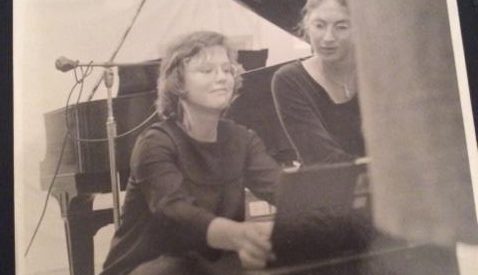
Read Part 1 of Beth’s memoir at http://www.soundwordsight.com/2019/07/beth-anderson-the-early-days-from-her-memoir/. Read Part 2 at http://www.soundwordsight.com/2019/08/beth-anderson-age-7-to-15-from-her-memoir/. Read Part 3 at http://www.soundwordsight.com/2019/08/beth-anderson-age-15-to-18-part-3-of-her-memoir/. Read Part 4 at http://www.soundwordsight.com/2019/09/beth-anderson-age-18-to-19-rorem-cage-swift-harrison-part-4-of-her-memoir/
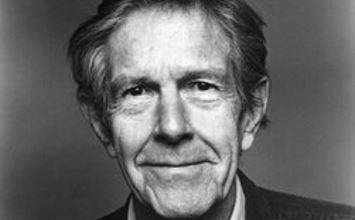 John Cage taught a composition class of about seventy people at University of California at Davis and he gave us all A’s. He lectured, told us stories, and gave us bags of mushrooms that he picked. He taught us how to use the I-Ching to choose a book in the library or a pitch for a composition by chance. He organized performances of his music. In one of these concerts I performed one of his Sonatas and Interludes for prepared piano from 1946. Cage’s study of Indian music had taught him that the purpose of music was “to sober and quiet the mind, thus rendering it susceptible to divine influences.” This was a new idea to me since music for me was about expressing emotion, or sublimating pain, or creating drama and beauty. I loved listening to Ravi Shankar’s sitar music because it was exotic and spacey, but I had not put it together that it was making me susceptible to divine influences.
John Cage taught a composition class of about seventy people at University of California at Davis and he gave us all A’s. He lectured, told us stories, and gave us bags of mushrooms that he picked. He taught us how to use the I-Ching to choose a book in the library or a pitch for a composition by chance. He organized performances of his music. In one of these concerts I performed one of his Sonatas and Interludes for prepared piano from 1946. Cage’s study of Indian music had taught him that the purpose of music was “to sober and quiet the mind, thus rendering it susceptible to divine influences.” This was a new idea to me since music for me was about expressing emotion, or sublimating pain, or creating drama and beauty. I loved listening to Ravi Shankar’s sitar music because it was exotic and spacey, but I had not put it together that it was making me susceptible to divine influences.
Cage also organized a performance of Eric Satie’s Vexations, a piano piece that is to be repeated 840 times. To do so at a reasonable speed took about eighteen and a half hours. We divided the performance responsibilities between about twenty performers and I enjoyed playing this for quite a long time. I organized performances of this at Mills several times, and with the same aesthetic in mind I also performed Chopin’s posthumous Mazurka op. 68 #4, marked ‘senza fine’ (to be played without end) for hours with Joseph Kubera in San Francisco in 1974. For these exceptionally long concerts, the audience drifted in and out, with the hardy few staying until the end.
Davis offered only group piano lessons so I studied off campus with the wife of the orchestra’s conductor, Aria Chung. Dyuong was a wonderful conductor and Aria was the best piano teacher I ever had. Both years I studied with her, I won the concerto contest. I played the first movement of Beethoven’s first “Piano Concerto” in 1970 and the Liszt “Hungarian Fantasia” in 1971.
My father was either shot by his friend or killed himself on March 4, 1970. He had cancer. I couldn’t afford to fly home for the funeral. My mother told me that if I came home, she could not afford the flight back, so I stayed in Davis and practiced my Beethoven. It was sad but there was nothing I could do.
Aria was Korean, short, beautiful, and powerful. When I made a mistake she would hit me hard on the back. It was such a surprise that I didn’t usually make the same mistake twice. She taught me how to use a karate chop to get a note really loud. My repertoire at that time was still Bach, Beethoven, Chopin, and Liszt. I practiced six hours a day when I studied with her and it was a joy. It did make it complicated to do other things such as study, compose, or go camping. If I took two days off to go hiking, I felt as though I slid back a week. It was simpler to not leave town.
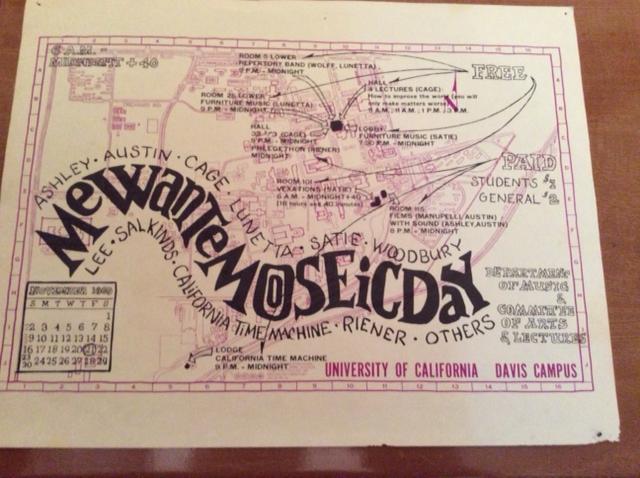
I did have other interests at Davis including studying yoga with Kriyananda and Indian astrology with Blanche Whitestar. I enjoyed dance history and studied art history with José Argüelles (1939-2011). Arguelles organized the first Whole Earth Festival on April 22, 1970, at Davis. For that, my friends borrowed a truck with a hydraulic lift on it and rolled my piano out of my room, into the truck and deposited it on the grass of the quadrangle in the center of campus where the festival was taking place. I spent the day performing, including parts of the Beethoven concerto. It was an amazing, happy, hippie day. When Jose organized the 1987 Harmonic Convergence event, I was in Central Park with all the other enthusiasts at 4 a.m. waiting for what, I am no longer sure. I remember eating dried apricots and hanging out and being really tired at the end of the day. We meditated for peace and enjoyed the idea of the sun, moon, and six planets forming a grand trine (120 degrees apart) in the heavens.
:format(jpeg):mode_rgb():quality(40)/discogs-images/A-833079-1183017049.jpeg.jpg) Besides Cage I had a few other high profile professors. The concert pianist Charles Rosen (1927-2012) taught me Romantic Music and a group study in sight-reading. He had just published his book The Classical Style in 1970 and I imagine he was considering writing the book on Romantic music that he did publish much later. He illustrated every idea of the century with the same few pieces, ie., Chopin’s Mazurka op.17 #4, and Schumann’s Carnaval and Davidsbundlertanze. He was a wonderful pianist and believed that anyone who had not begun the study of piano by age four would never be great. H. C. Robbins Landon (1926-2009) taught Classical Music and he was brilliant, charming, and an immensely prolific musicological writer. His edition of the Haydn Sonatas had come out in 1964 from Universal Edition and it was a must-buy.
Besides Cage I had a few other high profile professors. The concert pianist Charles Rosen (1927-2012) taught me Romantic Music and a group study in sight-reading. He had just published his book The Classical Style in 1970 and I imagine he was considering writing the book on Romantic music that he did publish much later. He illustrated every idea of the century with the same few pieces, ie., Chopin’s Mazurka op.17 #4, and Schumann’s Carnaval and Davidsbundlertanze. He was a wonderful pianist and believed that anyone who had not begun the study of piano by age four would never be great. H. C. Robbins Landon (1926-2009) taught Classical Music and he was brilliant, charming, and an immensely prolific musicological writer. His edition of the Haydn Sonatas had come out in 1964 from Universal Edition and it was a must-buy.
Richard Swift said that he enjoyed the perk of being able to hire these visiting scholars so that he would have someone interesting with whom he could have lunch. UCD was famous for its viticulture and wine-making programs, so I imagine those lunches were cheerful. Wine tasting was a pleasurable past-time for students on weekends. The famous new music soprano, Bethany Beardslee, spent a semester as a visiting scholar after I left. She wrote in her memoir, I Sang the Unsingable: My Life in Twentieth-century Music, that Davis was the “Princeton of California.”
When I was twenty-one, I began to realize that I was actually going to graduate from college. I never expected to live this long, let alone graduate with all the requirements. Time passed and I played the Liszt “Hungarian Fantasia” for piano and orchestra in the Spring at UCD with Deyong Chung conducting and Larry Austin playing first trumpet.
 That Spring Richard Swift spoke to me about doing an MA in musicology at Davis but I decided against it. I still wanted to go to a school where I could write music and there would be support for it. I went down to Oakland and played for the illustrious pianist Bernard Abamowich at Mills and he invited me to do an MFA in piano performance. That seemed like a good idea because Mills had an electronic music studio, lots of Rockefeller funding, and I hoped to play twentieth century music.
That Spring Richard Swift spoke to me about doing an MA in musicology at Davis but I decided against it. I still wanted to go to a school where I could write music and there would be support for it. I went down to Oakland and played for the illustrious pianist Bernard Abamowich at Mills and he invited me to do an MFA in piano performance. That seemed like a good idea because Mills had an electronic music studio, lots of Rockefeller funding, and I hoped to play twentieth century music.
In the long run, I think going to Mills was a good idea, but that first year with Bernard was a serious drag.
I was so bored that I began studying astrology at the San Francisco Astrology School in 1972. I had been interested for a quite a while but I waited until I thought it had gone out of style. I had had a lesson from Blanche Whitestar in Davis in 1969. She and Kryananda had given duo lectures there. Blanche had confused me. She taught Siddereal astrology and that required arithmetical corrections on the corrections. The math was unexplained and illogical, and Blanche had an excitable personality.
 The SFAS had a clear curriculum with exams after Level I A & B, and progressed to Level II A & B, and so on. I had homework and a kind of catechism. The eminent astrological writer and creator of reference books, Doris Chase Doane, ran the school and my teacher was Zola Nichols. We used Lynne Palmer’s books as primary texts. Whether or not you believe in astrology, the study was very straightforward. I really enjoyed it and eventually taught and did charts for years. When I first moved to New York I apprenticed myself to Lynne Palmer and learned quite a bit more. George Macuinas, the Fluxus artist, made my astrology poster for advertising on the street and I had an ad in the yellow pages.
The SFAS had a clear curriculum with exams after Level I A & B, and progressed to Level II A & B, and so on. I had homework and a kind of catechism. The eminent astrological writer and creator of reference books, Doris Chase Doane, ran the school and my teacher was Zola Nichols. We used Lynne Palmer’s books as primary texts. Whether or not you believe in astrology, the study was very straightforward. I really enjoyed it and eventually taught and did charts for years. When I first moved to New York I apprenticed myself to Lynne Palmer and learned quite a bit more. George Macuinas, the Fluxus artist, made my astrology poster for advertising on the street and I had an ad in the yellow pages.
Mr. Abramovich loved Schubert, Chopin, Schuman and Brahms, and wanted me to perform them. I wanted to do Stockhausen, Liszt, and Cage …and my own music. I tried doing it his way. The lessons were about $125 apiece in addition to tuition, of course. I felt as though I deserved one of his son’s paintings because I had clearly paid his tuition for art school in France.
Marcia Mikulac, Rae Immamura, and I were his three Mills piano students and we lived together for a year in an Oakland apartment with a sign in the back window that said, “Don’t bother robbing us anymore. There’s nothing left.” It was there when we moved in and we left it there. Nothing bad ever happened.
Abramovich also taught at several other schools and had an enormous reputation in the bay area. Besides playing on Mills recitals, we had musicals at his lovely semi-submerged, house in the Berkeley hills. I can’t think of a thing I learned from him…except, years later I came to love Brahms’ intermezzi. Short and luscious.
But being at Mills was a good thing. My second year I switched teachers, much to everyone’s surprise. Naomi Sparrow was a pianist of much more interest to me. She specialized in twentieth century music. For my master’s recital in April 1973 I played the 1924 Stravinsky Sonata, L’Union by Gottschalk, Nocturnes 1, 2, and 5 by Satie, Waiting and Suite For Toy Piano by John Cage, Last Pieces by Feldman, a west coast premiere of Accompaniments by Christian Wolff (the one about latrines in Vietnam that has foot pedals for drums plus speaking and piano), Quiver by John Dinwiddie, music by my friend Tony Gnazzo and Music For Myself by guess who. Hsiung-Zee Wong, a composer member of Hysteresis, a women composers’ group at Mills to which I belonged, did my jazzy, lime green dual purpose poster-program. I served marinated mushrooms, in honor of Cage, at the reception. A wonderful sensitive pianist turned pages for me and I had a good audience including the new music pianist Joseph Kubera, and the composer-pianists, Betty and Shirley Wong.
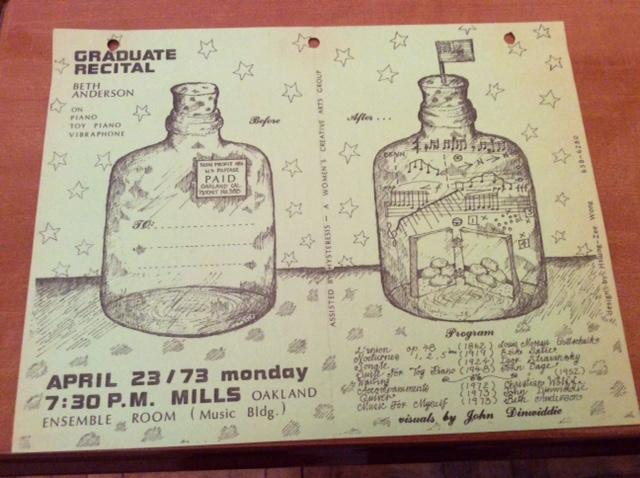
When I came to Mills in the fall of 1971, the head of the music department, Margaret Lyons, suggested that I study with Terry Riley who had just been hired to teach Cyclic Composition. I had played flute in a performance of his In C at University of California at Davis and I had heard the recording of his “A Rainbow In Curved Air”, so it seemed like a wonderful opportunity. Terry was in his late thirties then and wore Indian cotton pants and tunics with long wool vests. We all sat on the rug and when we arrived, Jordan was already playing the tambura drone. What Riley really taught was Indian singing that had been taught to him by Pandit Pran Nath (1918–1996). Pran Nath was a master of Indian classical voice, who also taught La Monte Young and Marian Zazeela, among many others in India and the USA. Riley had more advanced students from Ali Akbar Khan to accompany us on tabla, tambura, and voice. We learned one raga, Sa Re Ga Pa Da Sa, which closely resembled the pentatonic scale.
Terry did not play recorded music or analyze our scores or anyone else’s. He didn’t talk about the music. He sang and we copied him. The main bit of information, demonstrated and unspoken, was that a melody could be made of several small ideas strung together and these pieces of a melody could be reordered and exchanged with other pieces of melodies to make a larger ongoing structure. At the end of each larger phrase there could be little ending phrases such as PaDaSa, PaDaSa, PaDaSa, for example. The method of reordering pitches and making coherent phrases that used tonal-modal scales as a basis was, although ancient, new again to all of us in the class. That was useful.
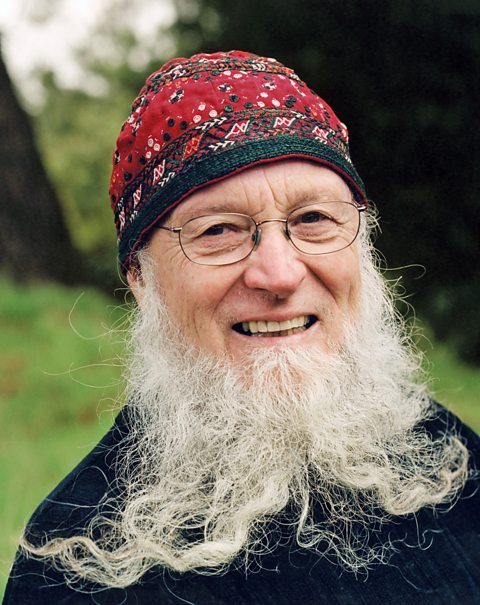 I found the class intriguing and it changed the way I thought about composition and the available materials. However since Mr. Riley required that we sing without vibrato and since I was also studying Classical Western singing, arias and lieder, I had trouble. I could not get the vibrato out of my voice. I think that is why he gave me a B. I ran into him the second semester and he asked me why I had not taken the more advanced Cyclic Composition II with him. It was embarrassing but I told him as a graduate student with a scholarship, I could not afford Bs. It was his first term teaching and I think he was surprised by this conundrum.
I found the class intriguing and it changed the way I thought about composition and the available materials. However since Mr. Riley required that we sing without vibrato and since I was also studying Classical Western singing, arias and lieder, I had trouble. I could not get the vibrato out of my voice. I think that is why he gave me a B. I ran into him the second semester and he asked me why I had not taken the more advanced Cyclic Composition II with him. It was embarrassing but I told him as a graduate student with a scholarship, I could not afford Bs. It was his first term teaching and I think he was surprised by this conundrum.
I think of Terry as a major influence on me but I only studied with him for four months. The music that I composed between 1971-1978 did not demonstrate that influence. It took years to work its magic.
I studied analysis and contemporary music history with Nate Rubin. He prepared his lectures well, introduced me to interesting compositions, was the concert master of the Oakland Symphony, and eventually played in my performances. I loved Nate. He even introduced me to the music of Michael Sahl, a composer who would become my close friend after I moved to New York. In 1994 I found out that Nate had written a book, John Cage and the 26 Pianos, in which he discussed my work for four pages.
Category Sight, Sound, Word | Tags:
Comments Off on Beth Anderson – Cage, Riley, and an MFA in Piano – Part 5 of her memoir
Sorry, comments are closed.

